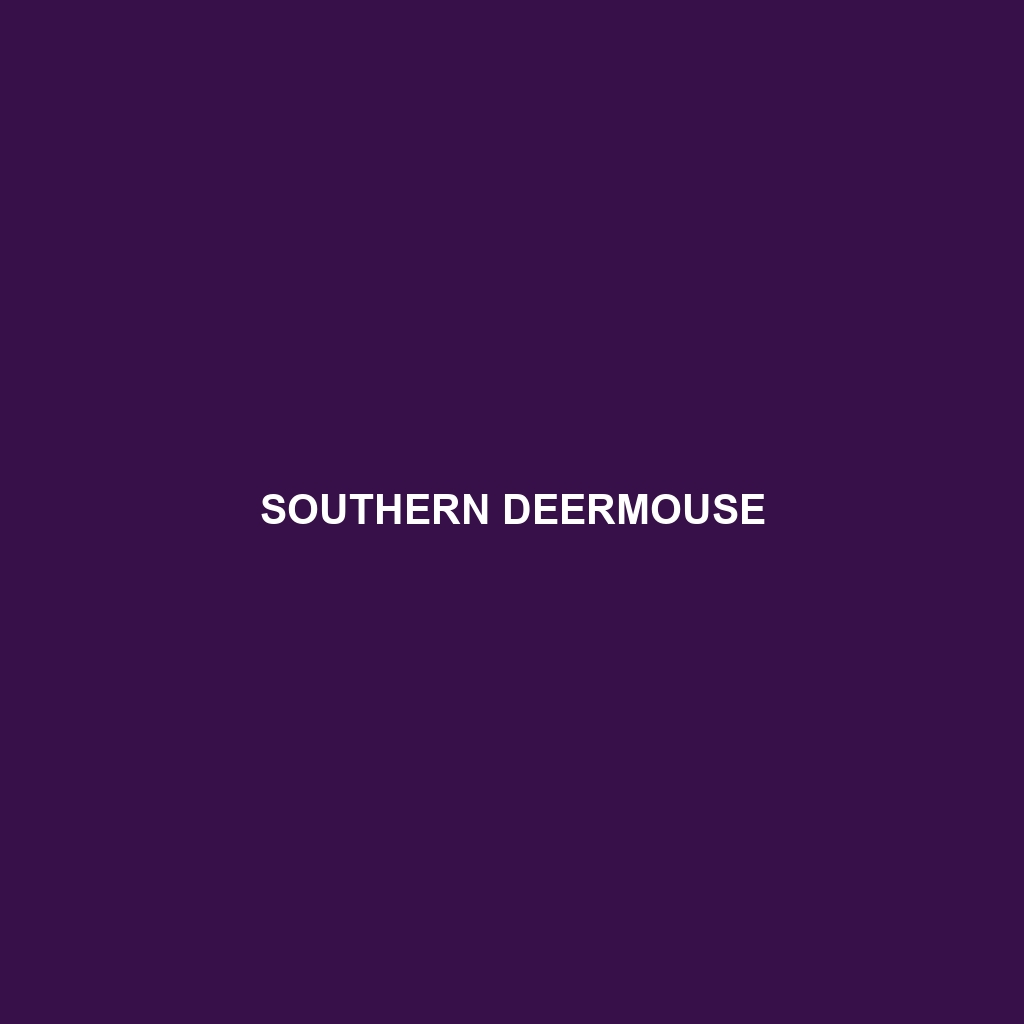Southern Deermouse (Peromyscus maniculatus)
Common Name: Southern Deermouse
Scientific Name: Peromyscus maniculatus
Habitat
Southern Deermouse is primarily found in a variety of habitats across North America, particularly in the southern United States and parts of Mexico. This species thrives in grasslands, shrublands, and forests, often preferring areas with dense underbrush for cover. They are commonly associated with environments that provide ample shelter and food sources, including agricultural fields and forests with mixed vegetation.
Physical Characteristics
Southern Deermice are small rodents, typically measuring between 6 to 8 inches in length, including a long, hairy tail that can add an additional 3 to 4 inches. Their fur is usually a soft brown or gray, featuring a white underbelly, which provides camouflage in their natural surroundings. One distinctive feature is their large ears and prominent eyes, which contribute to their excellent hearing and vision, making them adept at avoiding predators.
Behavior
Southern Deermice are primarily nocturnal and exhibit a range of behaviors related to their foraging and social interactions. They are known for their agility and can climb and jump with ease. This species is also territorial, often marking their territories with scent. They communicate using a variety of vocalizations and scent markings, which are crucial for mating and social organization.
Diet
The diet of the Southern Deermouse consists mainly of seeds, fruits, nuts, and insects. They are opportunistic feeders, known to consume a wide variety of foods based on seasonal availability. Their foraging habits are essential for the dispersal of seeds, which plays a significant role in their ecosystem’s health.
Reproduction
Southern Deermice have a relatively high reproduction rate, with mating occurring frequently throughout the year, although peak breeding usually happens in the spring and summer months. A typical litter can consist of 3 to 7 offspring, born after a gestation period of about 21 to 28 days. The young are altricial at birth, meaning they are born hairless and blind. Parental care is crucial during the early stages of life, with the mother being primarily responsible for nurturing and protecting the young.
Conservation Status
As of now, the Southern Deermouse is classified as Least Concern on the IUCN Red List, indicating that there are currently no significant threats to their population. However, habitat destruction and fragmentation pose potential risks that could impact their future survival.
Interesting Facts
– Southern Deermice have a lifespan of approximately 2 to 3 years in the wild.
– They play a vital role in their habitats as prey for various predators, including owls, snakes, and larger mammals.
– These mice can leap over a foot in the air, making them adept at escaping threats.
Role in Ecosystem
In their ecosystems, Southern Deermice serve as a crucial food source for many predators, contributing to the food web. Additionally, their seed dispersal habits help maintain plant diversity and overall ecosystem health. As nocturnal foragers, they aid in the control of insect populations, thus balancing their habitats.
Conclusion: The Southern Deermouse is an adaptable and significant species in North America that contributes to its ecological landscape through its behaviors and interactions. Understanding their role and conservation needs is essential for promoting biodiversity in their habitats.

